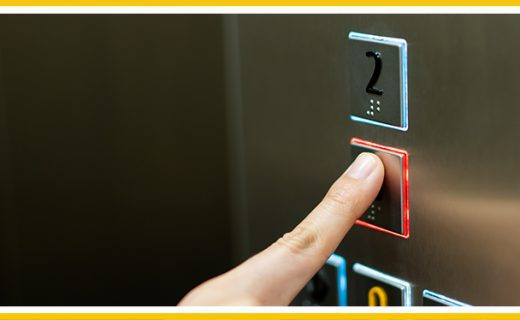20 February 2020
FirstPort looks after over 3,500 lifts across the residential developments that it manages in the UK. More than Network Rail, the Department for Work and Pensions, or Tesco’s. In this blog Gavin McGarty, Technical Manager responsible for FirstPort’s lift maintenance, explains how we keep one of the UK’s largest lift portfolios going up and down.
When you install a lift, the expectation is for it to have a lifespan of around 15 years before it needs to be modernised or upgraded. Its lifespan depends on a number of factors including the frequency of use or journeys it undertakes, the quality of the original installation and of course maintenance over time.
Some lifts can last well beyond this lifecycle and presently the FirstPort record is a massive 36 years at the moment – a true veteran in the lift world. During the latter part of its life, the system is likely to have decreasing performance and increased service calls. This is why a diligent Property Manager will always ensure the Annual Service charge budget has sufficient funds to cover maintenance, and importantly that the Reserve Fund also has built up sufficient funds to cover a possible replacement that may be required after 15-20 years in service.
The day in the life of a lift
There are many factors that influence the expected life of a lift. The three main ones are:
• The original design and installation
• How often it’s used
• How well it’s maintained
Keeping a lift healthy
If a lift is not maintained regularly, its lifespan could decline drastically. In these circumstances such a unit might require modernising in less than a decade. When maintained well, a lift will generally only need to be modernised to meet the latest standards.
Service frequencies differ depending on the age and the number of floors lifts serve but these frequencies are commonly on a 4, 6 or 12 times a year basis. More visits are generally speaking always better for long term reliability but are also heavily related to use.
Regular, quality maintenance and parts replacement can help delay upgrades and modernisations. Here are some of the maintenance tips we look out for to increase a lift’s life.
1. Visual Inspection: Our site team will visually inspect lifts regularly. They are looking for things like bumps, scrapes, the level with the landing when its parked, jerky doors, or flickery lights. Residents can also keep an eye out for these things and report them to their development/property manager.
2. Be kind to your doors: Almost 70% of lift breakdowns at FirstPort are door related. Propping the doors open for any extended period of time (over 30 seconds), pushing or forcing the doors back as they’re closing can cause issues. If the lift senses that there’s something not quite right with a door – it won’t run for obvious safety reasons.
3. Don’t overload your lift: It just won’t run for safety reasons.
4. Cleaning: The car door tracks, hall door tracks, and infra-red detectors need to be cleaned regularly. A clean slightly damp cloth can work wonders and prevent some of those door issues mentioned above.
5. Cabin lighting: Our Development Managers will ensure that the service agent replaces non-working lights during regular checks. Usually, this part is not included in the contract, so we ask the service team for a replacement.
6. Written record of any issues: It is recommended we maintain a written record of all the issues. You can then easily explain the problems when the service team comes for scheduled maintenance.
7. If your lift breaks down, take a breath! Almost all lifts of any age will try to reset themselves in the event of something not working. If a lift doesn’t appear to doing what you would expect give it ten minutes and then try to operate it before calling the lift company. One in four call outs are to lifts that have subsequently re-set and are now working fine. Share the 10 minute rule with your fellow residents, it may save, time, cost and frustration.
While the maintenance crew will address issues like worn out parts and lubrication, follow these tips and your lift will keep going up and down for years.



